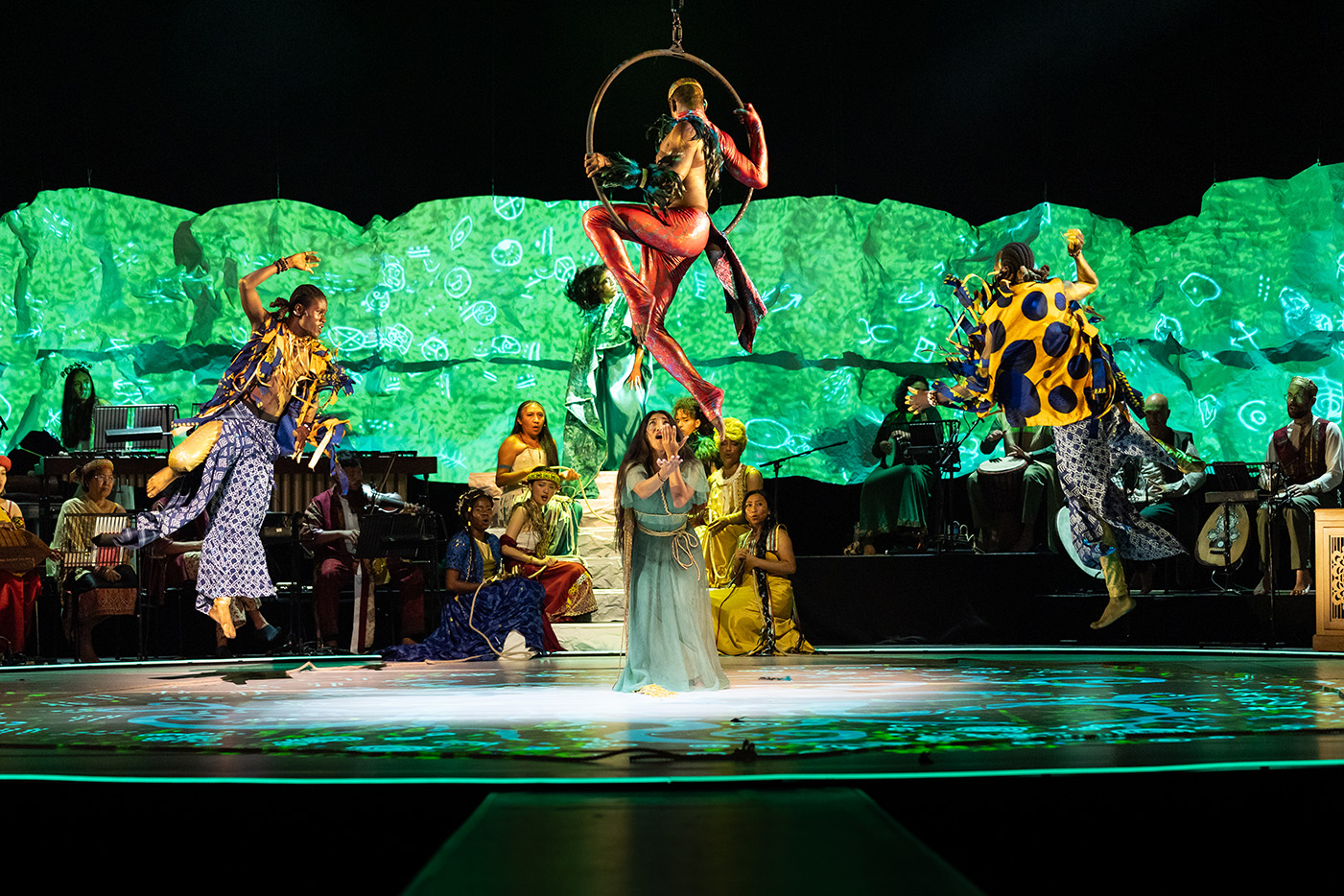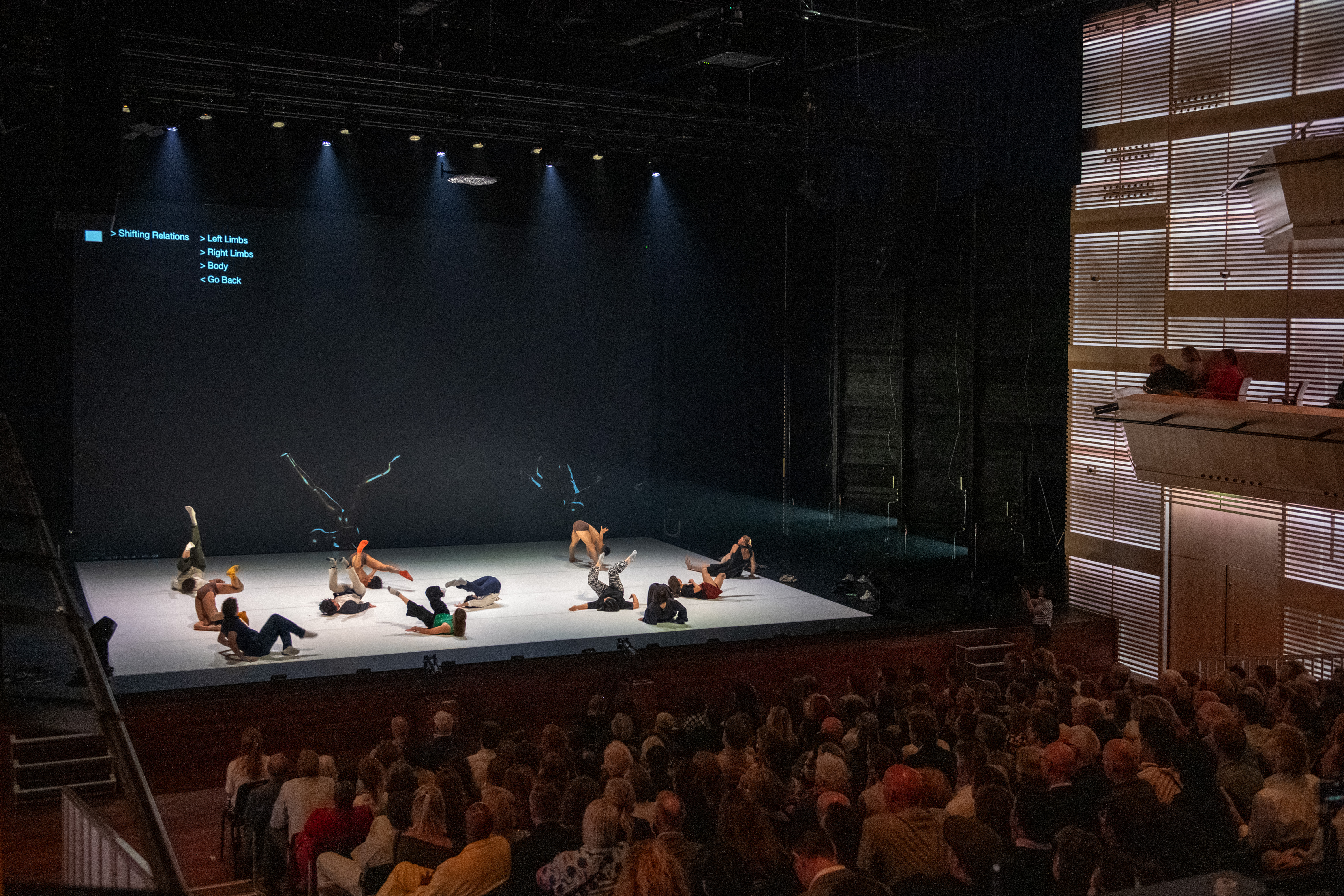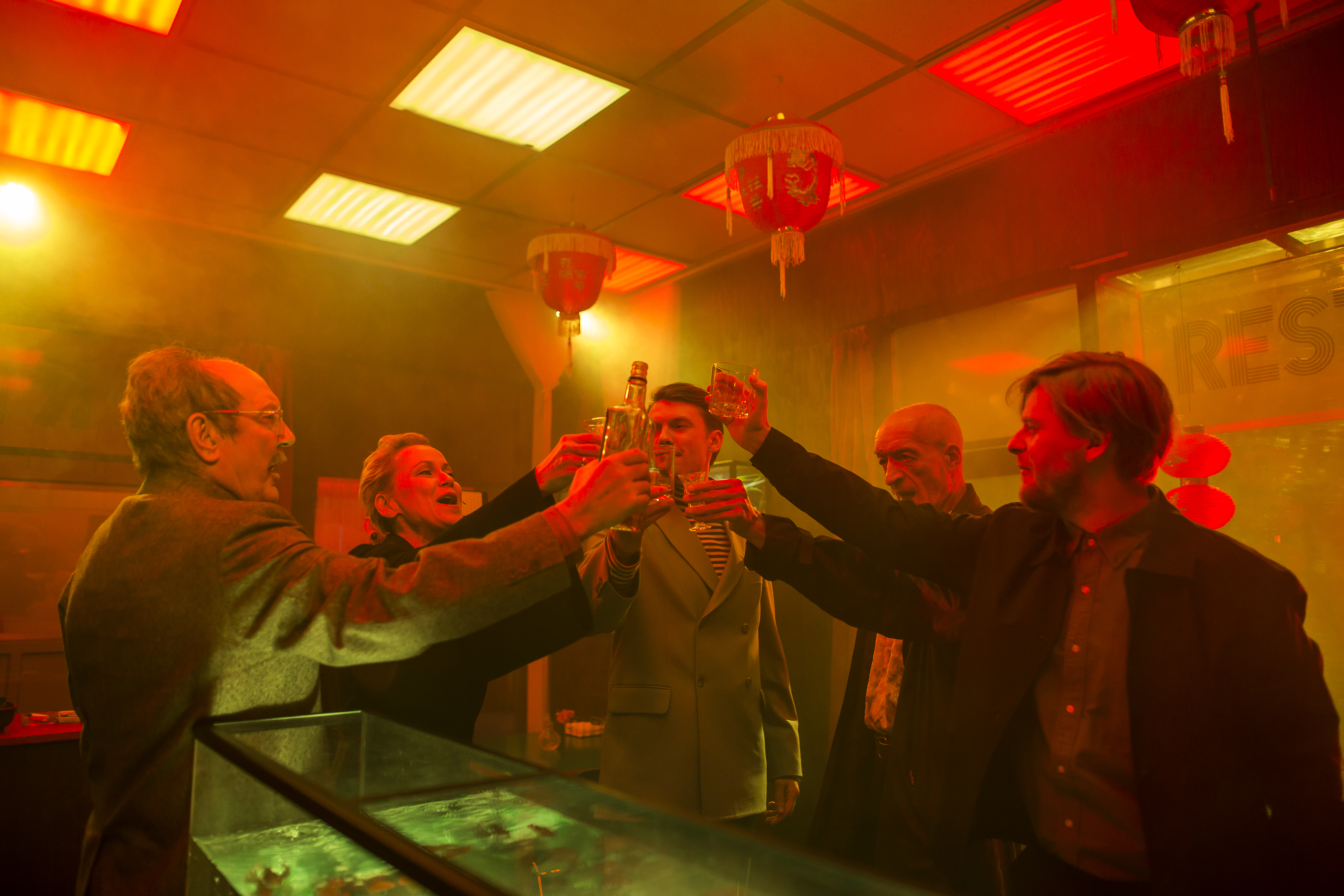The Non-Neutral Body
With his onstage transformations and the ensuing conversations, Harrell showed the body is never a neutral means of expression, but rather is always coloured by personal and collective history, traditions, cultural codes and struggle. This awareness also figured in the work of other artists: in No Change, or Freedom is a Psycho-Kinetic Skill, DD Dorvillier wrestled her way through a landscape of microphones, cables, and lighting installations. In Ola Maciejewska’s The Second Body, the body almost literally merged with a massive block of ice. And in the gripping Extra Life, Gisèle Vienne explored the effects trauma and recovery can have on body and mind.

Although Extra Life was listed in the programme as a dance performance, the music of electronic music giant Caterina Barbieri played a major role as well. Notably, music often played more than a supporting role in dance performances – and vice versa. Terry Riley’s minimalist composition In C homed in on the dynamic between the individual dancer and the ensemble. In Study for Life, a tribute to Finnish composer Kaija Saariaho who died two years ago, five of her works were performed by members of Asko|Schönberg who were part of the choreography, moving among dancers from the Tero Saarinen Company.
Strong Women and Climate Change
Physical vulnerability played a major role in this year's Holland Festival programme, but the theme was also explored in other ways. Told By My Mother gave voice to the grief of mothers in war zones. Carolina Bianchi’s Trilogia Cadela Força – Capitulo II: The Brotherhood examined misogyny and sexual violence. And Otemba – Daring Women told the story of the Dutch-Japanese Cornelia van Nijenrode, who is depicted on a 17th-century painting from the Rijksmuseum and was the first woman in Dutch history to file a lawsuit over financial self-determination when looking to divorce her second husband.
Several performances took environmental vulnerability and the disastrous consequences of the climate crisis as their theme. The Second Body made melting polar ice caps tangible through the interplay between a dancer and a massive block of ice. Study for Life also featured a melting block of ice, suspended in the foyer, as part of the performance. Ring of Our Time blended myths and rituals from different countries and regions into an ecological opera. And Small Island Big Song was the name under which singers, musicians, and other artists from islands in the Pacific and Indian Oceans delivered an ode to their living environment. The water provides food, trade and life, but now threatens to swallow the islands due to rising sea levels.

Ring of Our Time combined expressive forms from very different cultures, with artists adopting each other's musical languages. This extensive blending of cultures and traditions based on equality was a common thread throughout the festival programme. The Atlas Orchestra brought together top soloists from all corners of the world. Forbidden Echoes paired electronics with instruments such as the ney, Iranian percussion and the santur. In Otemba - Daring Women, the Western vocal parts were answered by a singer from the Japanese Noh theatre tradition. With this work, the Holland Festival reflected on the Amsterdam 750 celebration, and inspired by this story Badass Tours created the "Daring Women Walk," a city walk that featured not only Cornelia van Nijenrode but also other 17th century women.
Artificial Intelligence and Art
This year’s Holland Festival opening performance Cyber Subin addressed a highly topical theme. The dance company of Pichet Klunchun, Thailand’s leading contemporary choreographer, used artificial intelligence to reinterpret traditional Khon dance and control the dancers' movements and the speed at which they were performed. Audience members were also invited to provide prompts and even come on stage to perform those tasks, showing how AI can be used as a creative tool to reactivate cultural heritage that might otherwise disappear.
In Michel van der Aa's VR opera From Dust, AI was also used for some of the scenes where avatars sing to the audience. And in Under Construction, Geumhyung Jeong performed a duet with self-built robots. Their imitations of human movements demonstrated the limitations of the flesh and blood body, but also those of technology. For now, humans remain superior and in control. Jeong patiently assisted her creations in straightening their backs or bending their legs like a parent teaching a toddler to walk.
Audience Involvement

The dancers of the Pichet Klunchun Dance Company were certainly not the only ones to actively involve the audience in their performance. Welcome to Asbestos Hall was largely about the informal contact between artists and visitors. Craig Taborn’s late-night performance, for example, saw listeners sitting in a cosy circle around him and his organ. Elsewhere, too, the distance between artist and visitor was made as small as possible, sometimes even erased entirely. The Paraorchestra invited the audience to move among the musicians, effectively dissolving the distinction between ‘us’ and ‘them’. Audiences saw the musicians - and each other - in a different light. This form of participation is the opposite of anonymously taking in a performance. You are made to show your true colours, join in and be part of it.
This involvement was more generally increased by the festival’s more compact format, with more events than previously, but in fewer days. Visitors with tickets for more than ten performances were not uncommon, immersing themselves in the festival atmosphere, which included sharing experiences with each other and taking in new impressions. The number of matinee performances was expanded this year, and weekends had a regular night programme, attracting a completely different target group, as well as workshops.
For instance, during Welcome to a Night at Asbestos Hall, curated in collaboration with Bar Bario and Suzy Blok, DJs Noise Diva and YoungWoman played late into the night, alongside ongoing performances by local artists, from the drag king performance by House of Løstbois to the hybrid work of Robin Nimanong, which blended ballroom, dance, and video. During the club night in Parallel, in collaboration with Africadelic, the festival touched on 50 years of (un)dependence (1975-2025) for five African countries – Angola, Mozambique, Cape Verde, São Tomé & Príncipe and the Comoros – and Suriname. The highlight was the live performances by Batida and Noite e Dia from Angola.
In Welcome to Asbestos Hall, participants in the Cybernetics Dance workshop, led by choreographer Pichet Klunchun and researcher Pat Pataranutaporn, could try out the interface from the Cyber Subin performance themselves. And Vitor Hamamoto’s Corpo entre ar workshop invited people to open up and slow down through improvised movement.
Large-scale Work

Despite a number of major venues in Amsterdam being unavailable, there was no shortage of large-scale productions. Certainly grand was Bérénice, directed by Romeo Castellucci, in which top French actress Isabelle Huppert brought Racine’s 17th-century play to life as a monologue. Truly monumental was Star Returning, the opera with dance about the traditions of the Chinese Yi people, which was performed at Amare in The Hague.
At seven hours long, The Seasons, directed by Eric de Vroedt and Het Nationale Theater, can rightly be called a marathon performance that effortlessly held the audience's attention with minimal props and maximum acting talent. Far more elaborate set dressing - the interior of a complete Chinese restaurant - featured in ROHTKO by Łukasz Twarkowski. The story of a Mark Rothko painting sold for $8.4 million in 2004 and later exposed as a fake formed the basis for this performance, resulting in an unforgettable spectacle on the intersection of theatre and cinema, and raising profound questions about authenticity and its value - both financially and emotionally.
Thanks to a collaboration with the Oranjewoud Festival in Heerenveen and the NTR, a one-off performance by the Atlas Orchestra was made possible. Forty top soloists on Asian and European instruments performed a new work by Joël Bons, the composer who pioneered transcultural music over twenty years ago with the much smaller Atlas Ensemble. Also in the ‘once in a lifetime’ category was the performance of Ring of Our Time, in which four compositions from different corners of the world were performed by artists from Nigeria, Iraq, Indonesia, Mexico, and Northern Europe. Parts of Miranda Lakerveld's ‘eco-opera’ have already been performed in other parts of the world, or will be in the future, for entirely different target groups.
